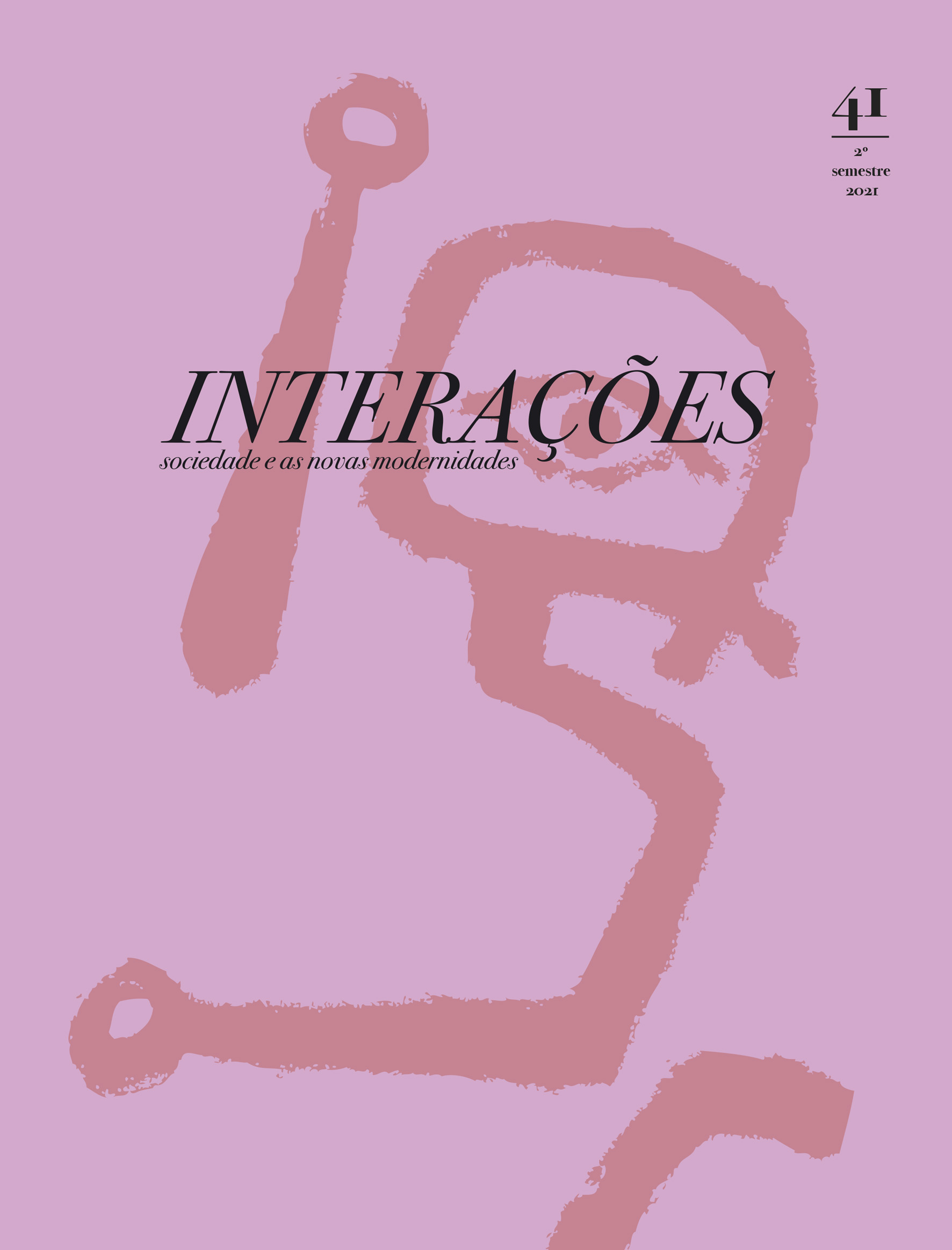White Fang Ally: The Arctic As Eden of Death in 30 Days of Night
DOI:
https://doi.org/10.31211/interacoes.n41.2021.a1Palavras-chave:
30 Days of Night, Vampiro, Ártico, Gótico, HeterotopiaResumo
Aliado de Presas Brancas: O Ártico como Paraíso da Morte em 30 Days of Night
Uma recorrente fraqueza congénita dos vampiros que povoam a televisão, literatura e cinema dos séculos XX e XXI é a sua suscetibilidade porfírica à radiação ultravioleta. O problema da luz solar é fundamental para a continuidade existencial morta-viva dos vampiros. Desta forma, ambientes sem sol, como o Ártico e a Antártica, representam ambientes puramente góticos, em cuja desolação, frio e escuridão a vida não-morta é capaz de proliferar sem ser perturbada pelos ciclos diurnos/noturnos de luminosidade que tradicionalmente restringem os vampiros. Com o objetivo de teorizar o valor do locus Ártico enquanto personificação do terror gótico, este ensaio recorre a 30 Days of Night (2002) de Steve Niles e Ben Templesmith como estudo de caso das ressonâncias entre o Ártico e a figura do vampiro. Num segundo momento, a análise foca o conceito de heterotopia de Michel Foucault para teorizar a maneira como o Ártico, cujos ritmos noturnos/diurnos se opõem radicalmente à maioria dos ciclos sazonais em outras partes da Terra, representa um paraíso ontoexistencial de morte para os não-mortos: um cronótopo que incorpora os atributos essenciais da condição ontoexistencial dos mortos-vivos.
Downloads
Referências
Barker, C. (2002). Cold blood [Introdution]. In S. Niles, & B. Templesmith, 30 Days of Night. IDW Publishing.
Bloom, C. (2010). Gothic Histories: The Taste for Terror, 1764 to Present. Continuum International Publishing Group.
Cohen, J. J. (1996). ‘‘Monster Culture: Seven Theses. In Jeffrey Jerome Cohen (Ed.), Monster Theory: Reading Culture (pp. 3–25). University of Minnesota Press.
De Vore, D., Domenic, A., Kwan, A., & Reidy, N. (n.d). The Gothic Novel. [Webarchive]. https://web.archive.org/web/20110413003858/http://cai.ucdavis.edu:80/waters-sites/gothicnovel/155breport.html. Accessed 2 Sept. 2018.
Estok, S. C. (2011). Ecocriticism and Shakespeare: Reading Ecophobia. Palgrave Macmillan.
Foucault, M. (1984). Of Other Spaces: Utopias and Heterotopias (Jay Miskowiec, Trans.). Architecture /Mouvement/Continuité (Octobre).
Hicks, M. P. (2018). The Horror Book Review Digest, Vol 1. High Fever Books. Hillard, T. J. (2009). ‘Deep Into That Darkness Peering’: An Essay on Gothic Nature.
Interdisciplinary Studies in Literature and Environment, 16(4), 685-695.
Hillard, T. J. (2013). From Salem Witch to Blair Witch: The Puritan Influence on American Gothic Nature. In Andrew Smith & William Hughes (Eds.), EcoGothic, (pp. 103-119). Manchester University Press.
Khair, T. (2009). The Gothic, Postcolonialism and Otherness: Ghosts from Elsewhere. Basingstoke: Palgrave.
Koenig-Woodyard, C. (2018). The Mathematics of Monstrosity : Vampire Demography in Richard Matheson’s I Am Legend. University of Toronto Quarterly, 87(1), 81- 109.
Mackenzie, L., & S. Posthumus. (2013). “Reading Latour Outside: A Response to the Estok-Robisch Controversy.” Interdisciplinary Studies in Literature and Environment, 20(4), 757-777.
Matheson, R. (1995). I Am Legend. Tom Doherty. (Original work published 1954).
Merola, N, M. (2014). ‘For terror of the deadness beyond’: Arctic Environments and Inhuman Ecologies in Michelle Paver’s Dark Matter.” Ecozon@, 5(2), 22-40.
Morton, T. (2010). “The Dark Ecology of Elegy.” In Karen Weisman (Ed.), The Oxford Handbook of Elegy, (pp. 251-271). Oxford University Press.
Niles, S., & Templesmith, B. (2002). 30 Days of Night. IDW Publishing.
Philips, D. (2003). The Truth of Ecology: Nature, Culture, and Literature in America. Oxford University Press.
Shelley, M. W. (1823). Frankenstein: Or, the modern Prometheus, (2 vols, 2nd ed.). G. and W. B. Whittaker.
Smith, B. (2017). Environmental Dangers in the Tundra. Sciencing, https://sciencing. com/environmental-dangers-tundra-23668.html. Accessed 2 Sept. 2018.
Taylor, M. A. (2012). “The Nature of Fear: Edgar Allen Poe and Posthuman Ecology.” American Literature, 84(2), 353-379.
Thacker, E. (2011). In the Dust of This Planet: Horror of Philosophy, Vol. 1. ZeroBooks.
Trexler, A. (2012). Novel Climes: Anthropocene Histories, Hans-Jörg Rheinberger’s Trace, and Clive Cussler’s Arctic Drift. The Oxford Literary Review, 34(2), pp. 295–314.
Trexler, A., & Johns-Putra, A. (2011). Climate Change in Literature and Literary Criticism. Wiley Interdisciplinary Reviews: Climate Change [Online], pp. 185- 200. http://onlinelibrary.wiley.com/doi/10.1002/wcc.105/abstract
Veland, S., & A. H. Lynch. (2016). Arctic ice edge narratives: scale, discourse and ontological security. Area, 49(1), 9-17.
Downloads
Publicado
Como Citar
Edição
Secção
Licença
Direitos de Autor (c) 2021 Kwasu David Tembo

Este trabalho encontra-se publicado com a Creative Commons Atribuição-NãoComercial 4.0.
Os direitos autorais dos trabalhos publicados são retidos pelo autor que outorga à Interações o direito de publicação original. O artigo publicado pode ser utilizado livremente para fins educacionais, não comerciais, em conformidade com a Licença Creative Commons - Atribuição-NãoComercial 4.0 Internacional, contando que seja citado o autor, o título do artigo, o título e número da revista conjuntamente com o URL ou DOI do artigo.



